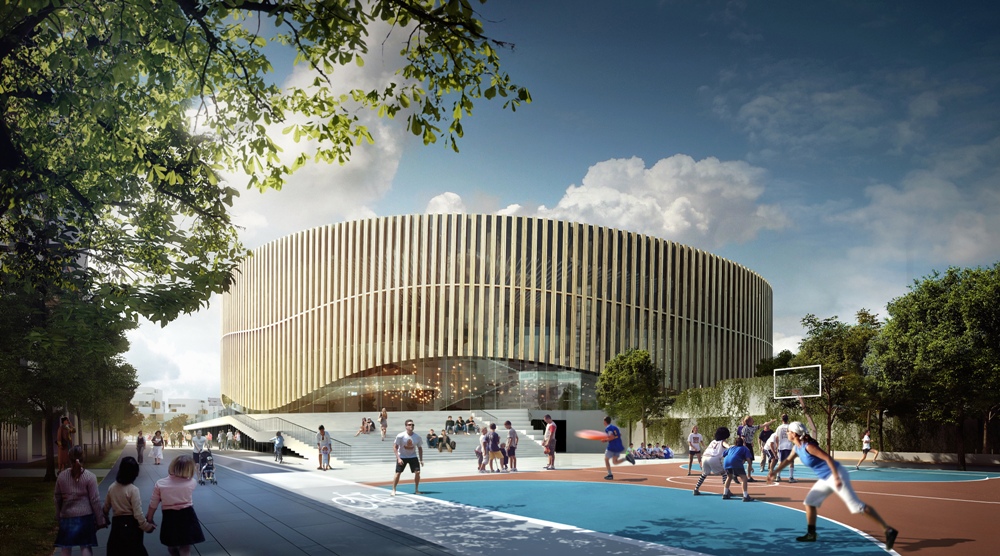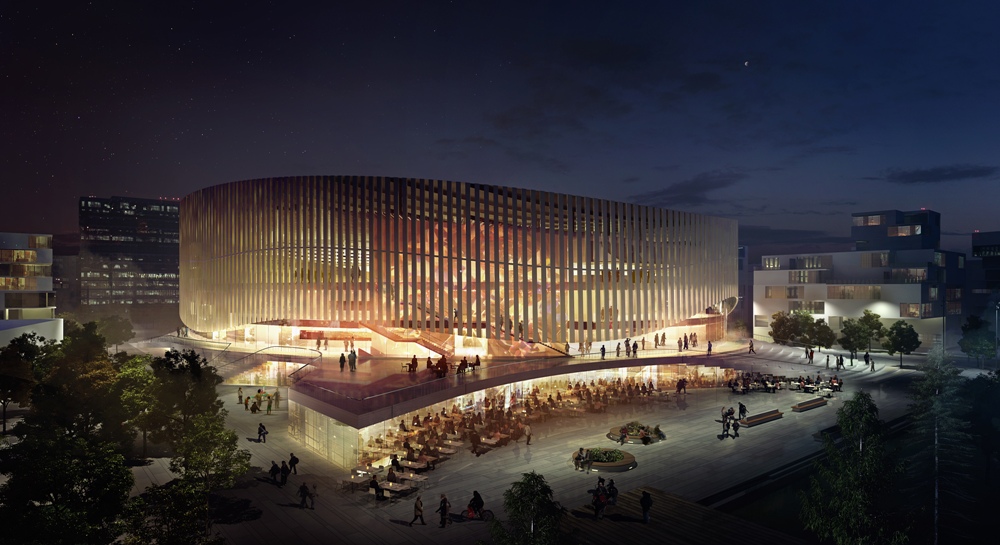A team of 3XN, HKS Architects, Arup, ME Engineers and Planit has won the design competition for the new Copenhagen Arena, which will be situated in the Orestad-area a short metro ride from the city center of Denmark’s capital. The project is expected to be completed in the fall of 2015.
Copenhagen Arena is designed so that the interior spaces can be adjusted depending on whether the event is a concert or a sporting event, in this way guests will always enjoy optimum conditions. However, the flexibility goes beyond a usual arena: "Our ambition was to create an arena, that besides from hosting a range of amazing sporting and musical events would also be a catalyst for various local activities for the enjoyment of residents and visitors. Therefore, the areas surrounding the arena are designed to be used for recreational purposes, while the public foyer easily can host markets or exhibitions. In this way, the arena is also a cultural center," says Partner and Creative Director of 3XN, Kim Herforth Nielsen.
Architecturally the design of the Arena is divided into a plinth and a top. The organic shapes of the plinth create a number of spaces and niches, which can be used for recreational purposes and which also helps to regulate the movements of many spectators. The top has a semi-transparent facade, where terracotta fins in a warm golden color, waves on the building in a circular motion. Terracotta is a material that has a long history of use in Denmark. It is durable and robust, and gives the arena stoutness. Moreover, the waving motion of the terracotta fins adds a playful and elegant expression to the building. The areas where the top rises from the plinth mark the arena entrances. Thus, the facade contributes to making it easy for spectators to find their way, explains Partner and Head of Competition of 3XN, Jan Ammundsen. The glass between the terracotta fins makes the building appear open and accessible, while the foyer areas receive natural light.
Copenhagen Arena will have a capacity of between 12,500 and 15,000 spectators, depending on the type of event taking place.























